Birds of Arizona
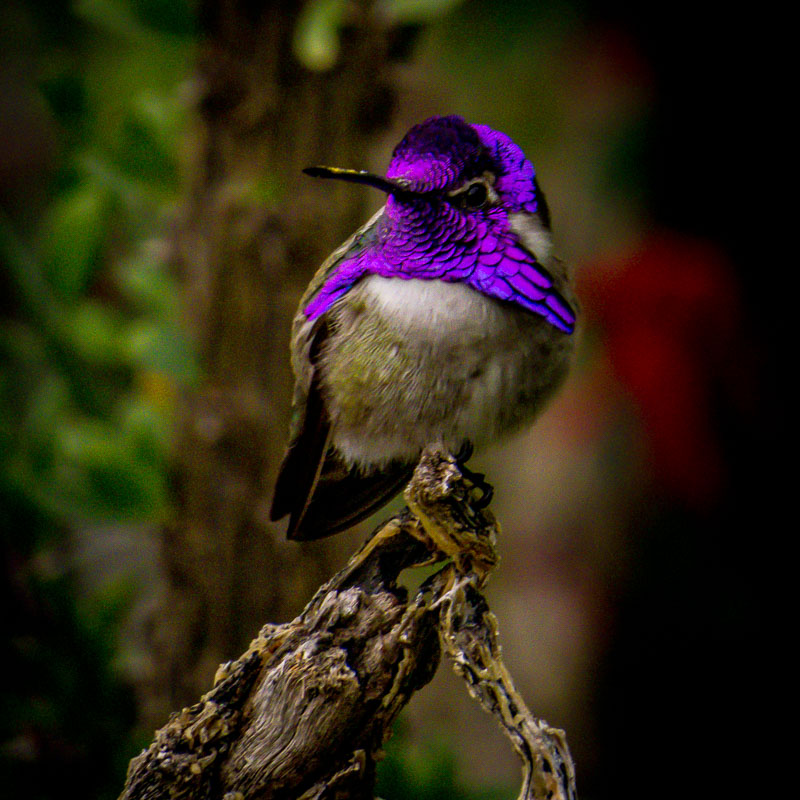
“Costa’s Hummingbird taken at the Desert Botanical Garden, Phoenix, AZ
Copyright by Jeffrey Ross, all rights reserved”
See previous JBRish posts and pictures about birds HERE
Birds of Arizona

“Costa’s Hummingbird taken at the Desert Botanical Garden, Phoenix, AZ
Copyright by Jeffrey Ross, all rights reserved”
Barn owls are very pretty and unusual-looking creatures. This short video shows two young barn owls being raised from chicks by humans and now need to learn how to fly. Luna, the older, is first to experiment with flight. The unique head movements are curious and look at the size and sharpness of the talons!
As followers of JBRish.com know, I live on the edge of the desert in North Phoenix only a few miles from Cave Creek, Arizona. As such, we have an interesting array of wildlife including many birds. One of my hobbies is trying to identify as many birds as possible when I can see them and/or capture them with a camera.
Today, a hawk landed on a telephone pole near the back corner of our yard. I have a Canon Powershot SX50 HS which has a very large zoom and allows me to get relatively close to birds even if they are far away. Since this bird was large, it made it just a bit easier.
I took these two pictures just before the hawk flew away.
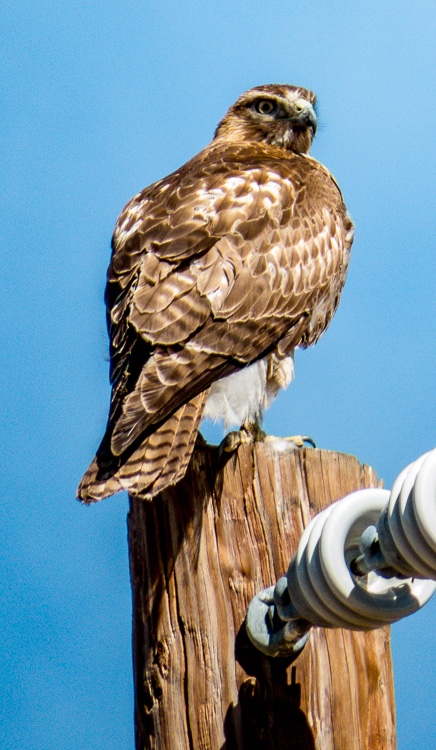
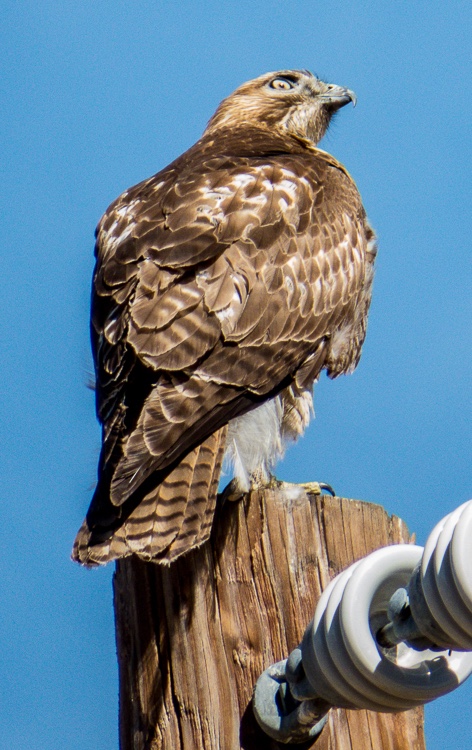
It turned out to be a juvenile Red-tailed Hawk (Buteo jamaicensis)
What birds reside in your area?
We arrived home the other day to see a Harris Hawk sitting on top of a dead bush we are readying for recylcing.
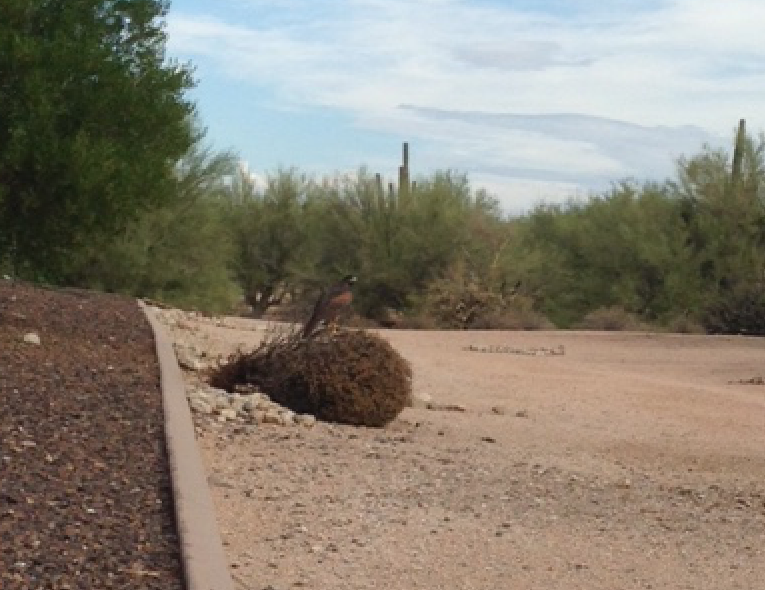
Read more about them at the Cornell Lab of Ornithology.
These magnificent birds “live” in our neighborhood and we see them often. Sometimes they prey on our other birds in an effort to survive and feed their young.
NOTE: To read more about one of the birds presented and to see an alternative picture, click the link associated with the name of the bird in the article below.
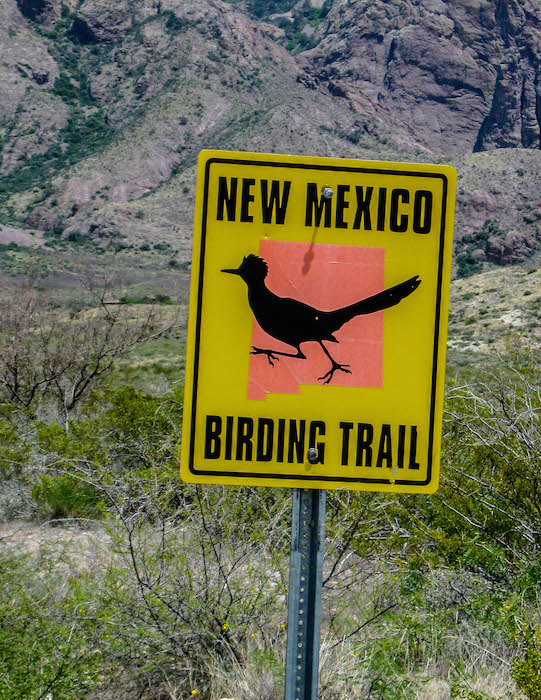
During our hiking visit to the Las Cruces, NM area, I was able to focus my attention on bird photography as well; forgive the pun.
One bird that was a new sighting for me was a Scaled Quail.
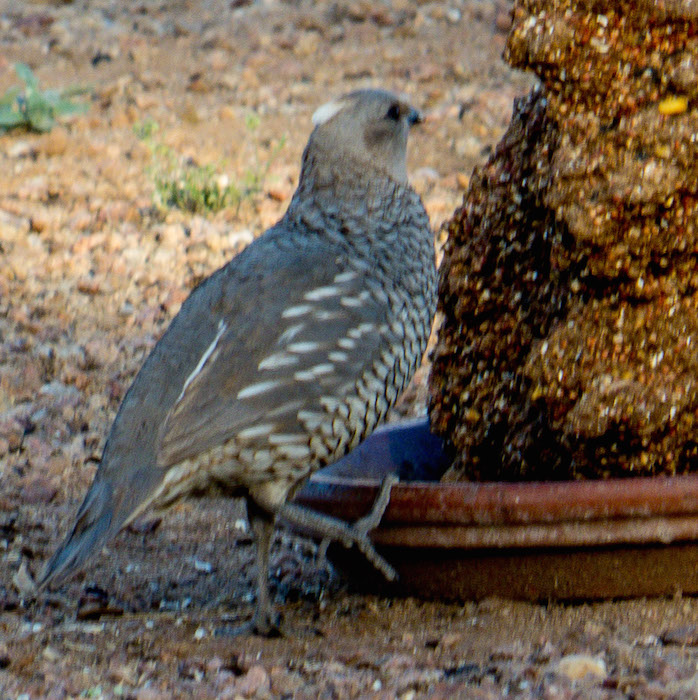
I thought the pattern on the feathers was quite interesting.
Hiking along a canyon wash, I spotted a bird atop a wall.
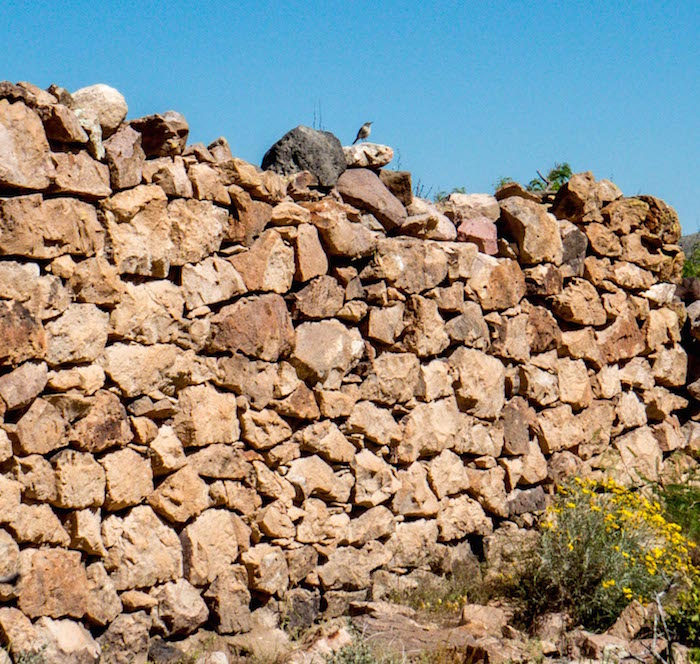
It had a somewhat familiar look because, as I later found out, it is a relative of the Cactus Wren. It was a Rock Wren.

The smallish bird below sitting on a branch is a Western Wood-Pewee.
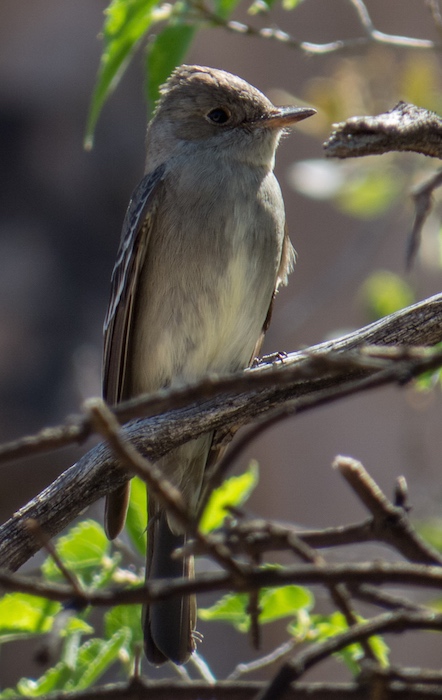
As a gust of wind came along I caught a shot of a Peewee from the other side.

We also encountered a… Black-throated Sparrow
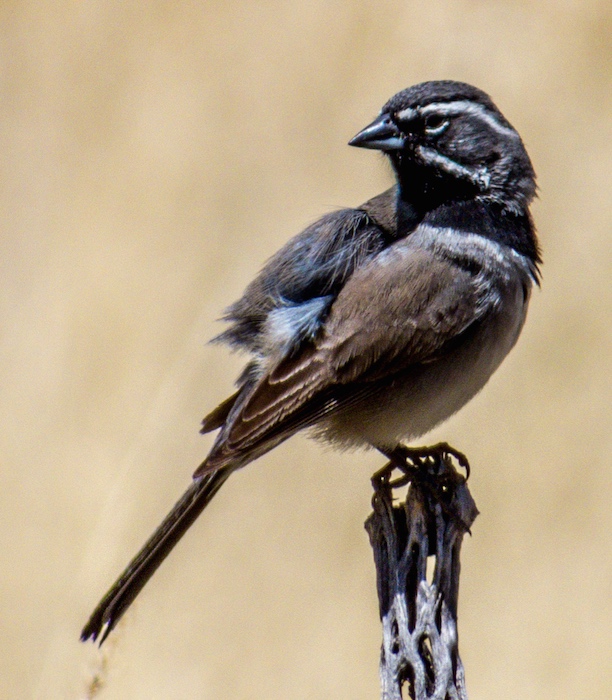
and a Chipping Sparrow as we made our way up and down the mountain trails.
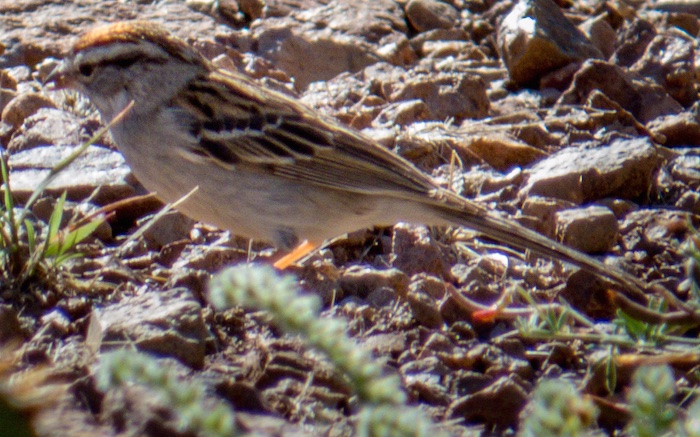
At the nearby Mesilla Valley Bosque State Park we spotted additional birds
This Swainson’s Hawk was very high in the sky, but I did the best I could. The unique color pattern of the underside is a sure give away.

Several Barn Swallows were dodging in and out from under one of the roofs and the light was very dim, but this appeared to be a parent with some food for a nestling.
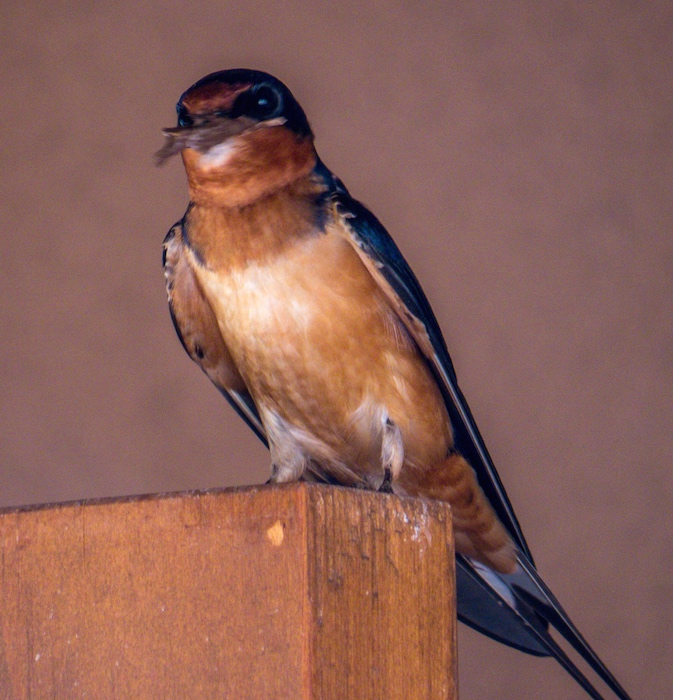
A Northern Mockingbird did not seem to mind as we moved in to get a closer look.
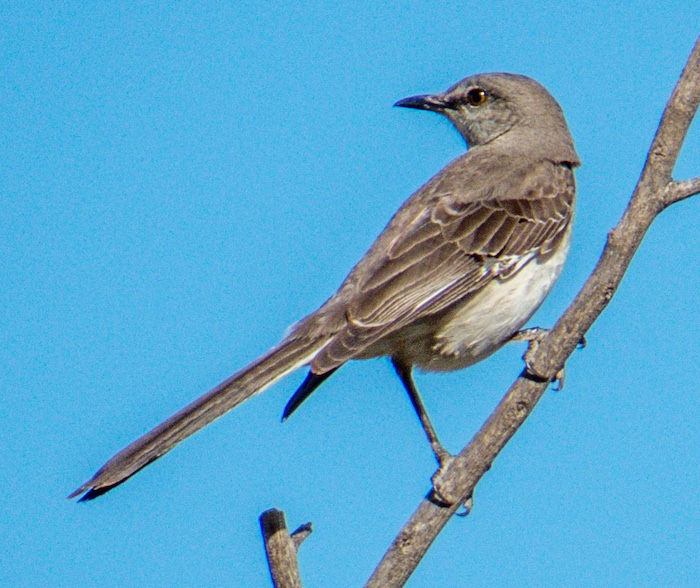
At a rest stop on the way home from Las Cruces this fellow was hopping from trash bin to trash bin looking for some goodies.

During a recent weekend, my wife and I took four days to visit Sierra Vista and the surrounding area to do some hiking and birding. We enjoyed hiking in the Coronado National Memorial and nearby Brown Canyon. This area is a hotspot for bird watchers. Our Bed and Breakfast, Casa de San Pedro (CDSP), caters to nature enthusiasts and birding hobbyists.
Little did we know when we made our reservations, that on one of the days we would be visiting CDSP, there would be a hummingbird banding. This was exciting news indeed! I had no idea how they would go about capturing, assessing, banding and releasing these very tiny creatures. I was very interested to witness the process.
(photos are below the narrative)
The first step is setting up the capture feeder is for one of the volunteers to place a capture net over the feeder.

The top of the feeder has a battery-operated mechanism which uses remote control to drop the net. When the bird is at the feeder, i.e. inside the net area, the net is triggered. (yellow arrow points to battery compartment)
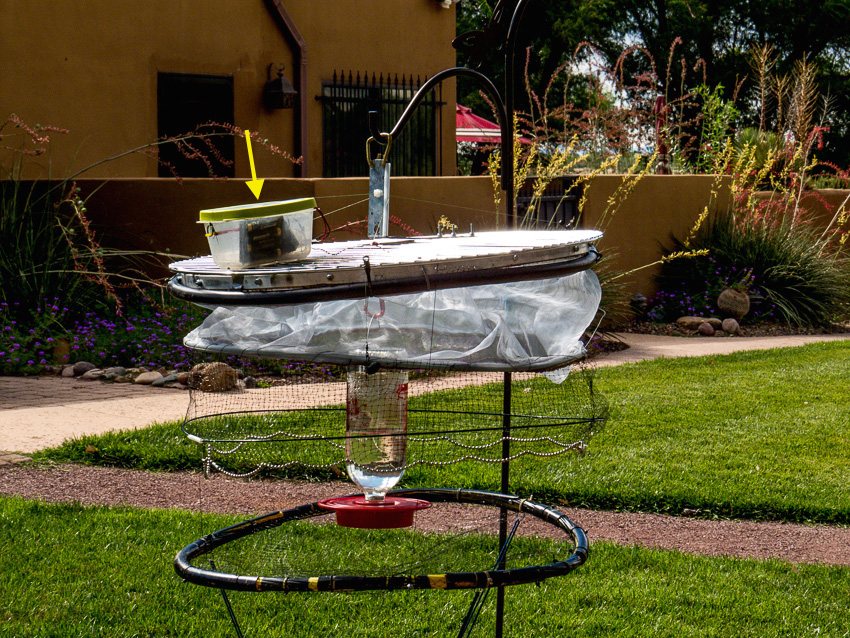
The remote control device stands at the ready.
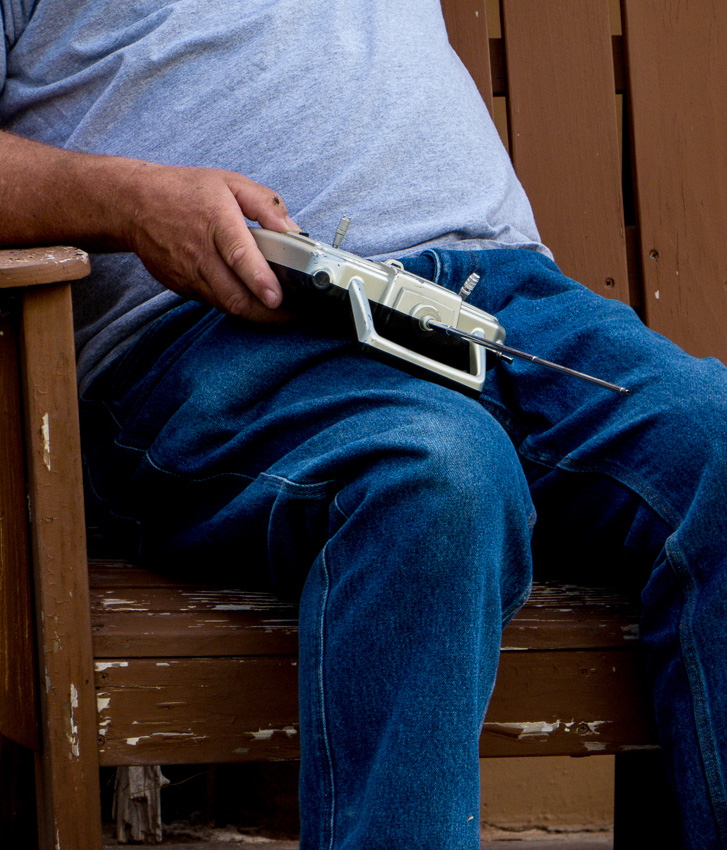
The Director of this program is Sheri Williamson, author of A Field Guide to Hummingbirds of North America (Peterson Field Guides)
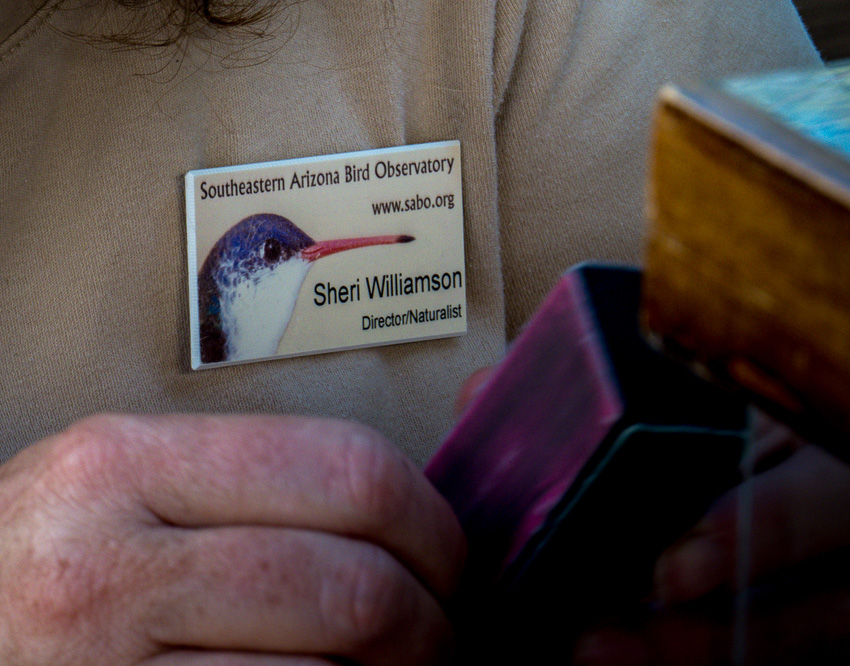
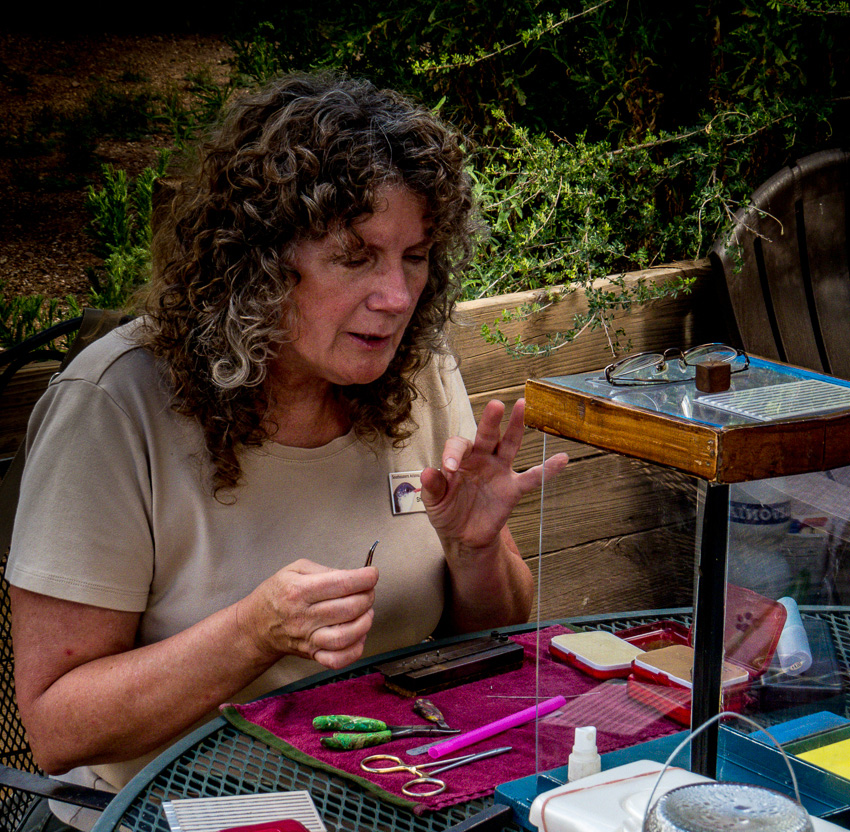
The banding was a collaborative effort. Volunteers worked to record specific data about each bird, collect donations from attendees, assist in transporting captured birds from the feeder area to the work station and finally safely releasing each bird.
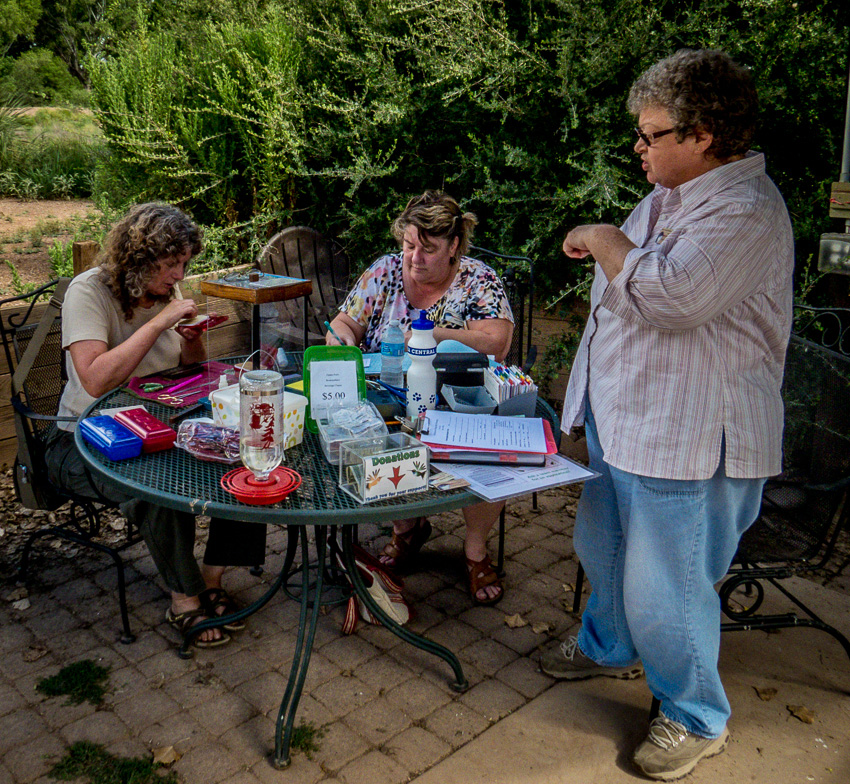
Once the net is dropped around the feeder, the bird is placed inside a laundry delicates holder to safely move it from one area of the field to another.
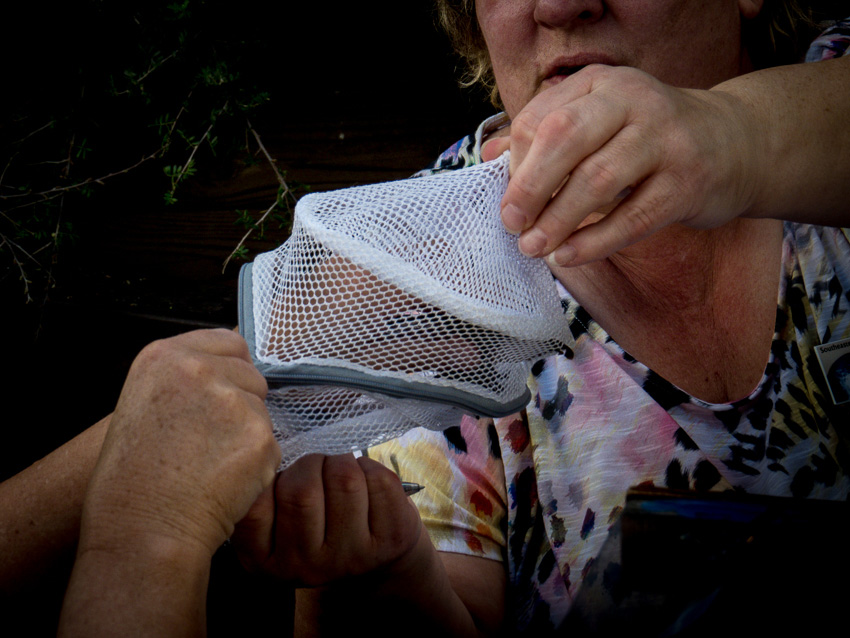
Sheri works to band a female Black-chinned Hummingbird. The yellow arrow points to the thin bird bill.
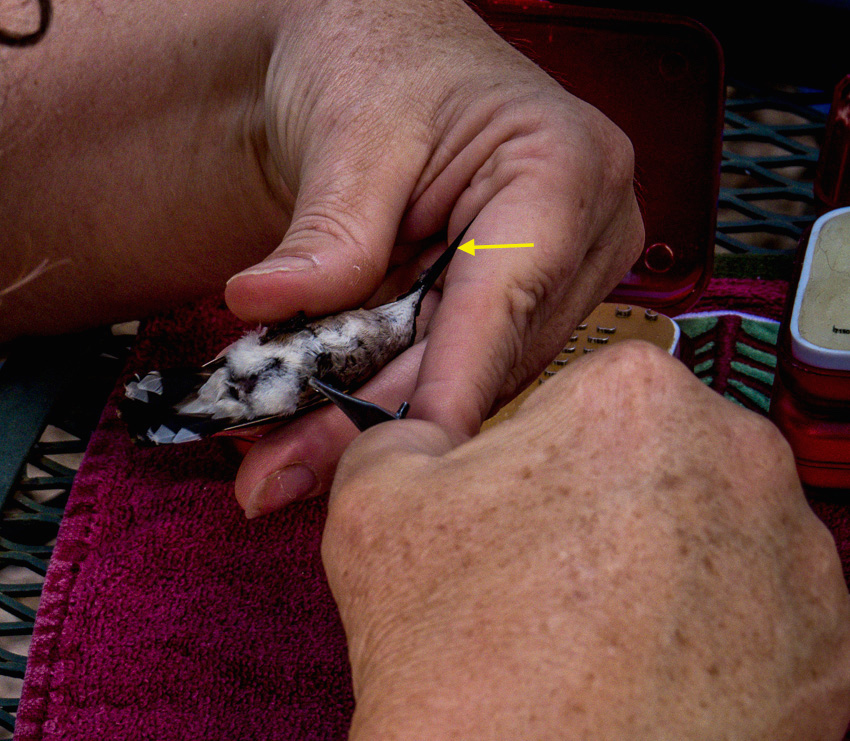
A variety of measurements were taken including the length of the bill, the length of the bird, the length of the wing, etc.

More measurements and assessment.
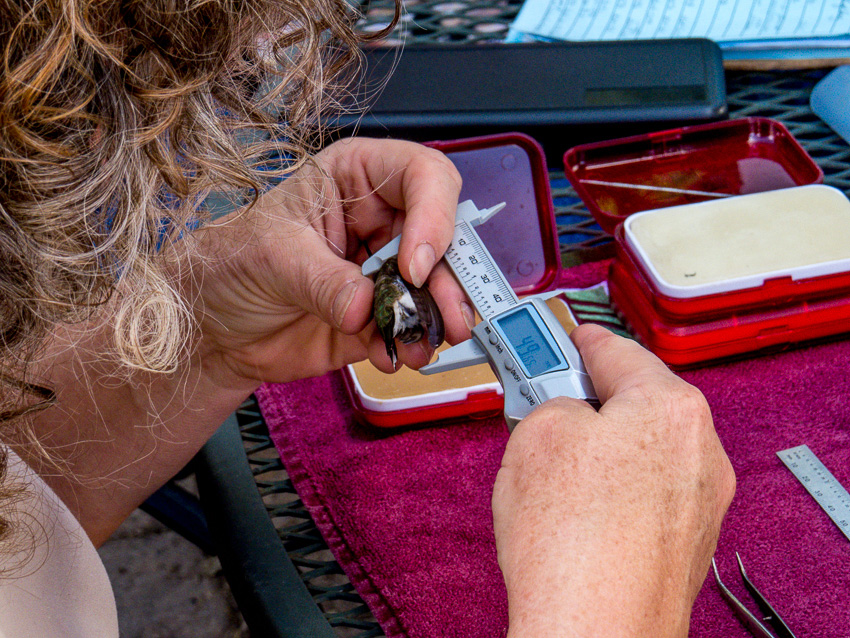
Here is a look at the record book (rotated to make it more legible (if zoomed in for a look).
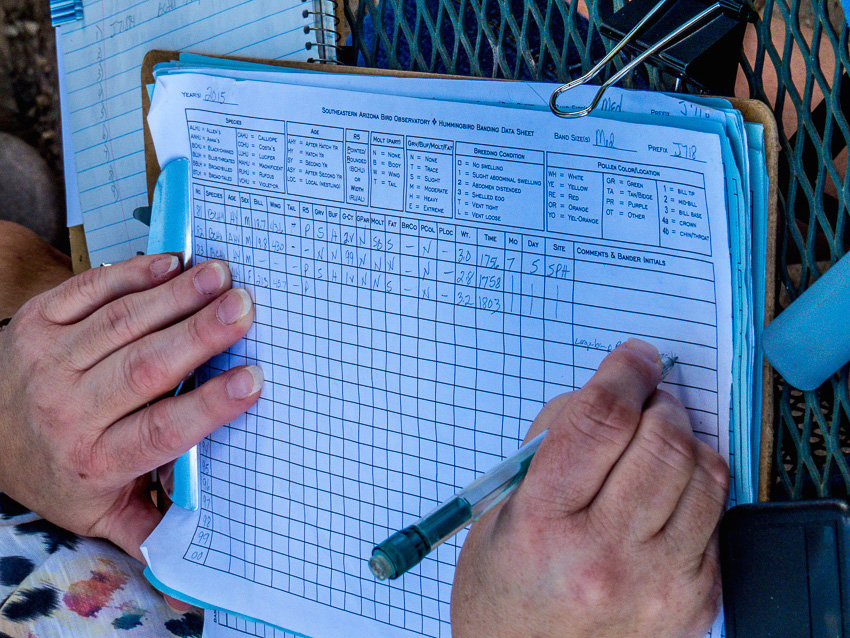
Sheri explains the examination process. …According to SOBA’s website:
The band is applied to the bird’s “leg” (actually the tarsus, equivalent to the long bones in our feet) using specially made pliers. The fit is checked, then the bird’s vital statistics are recorded: species, age, sex, lengths of wing, tail, and bill, weight, plumage condition, molt (loss and replacement of feathers), amount of visible fat, pollen color (if visible) and location, signs of impending or recent egg laying in adult females, and any peculiarities such as scars, odd-colored feathers, or presence of parasites. Pollen may be collected for later identification to help us understand what natural resources the birds depend on during migration and nesting.

A straw is used to separate the feathers to check for parasites, evaluate plumage, etc.
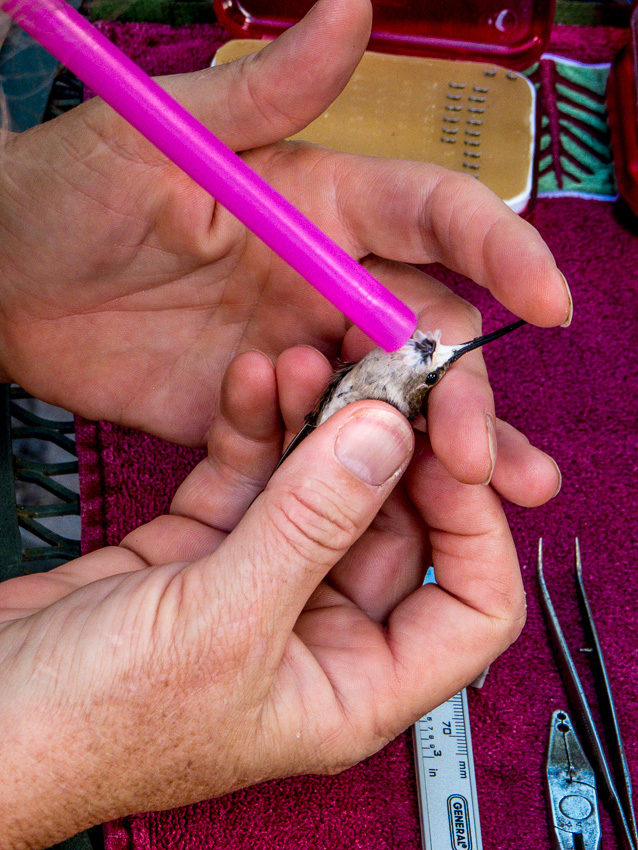
The female Black-chinned Hummingbird had an egg which could be seen through the translucent skin although it is not readily visible in the picture.

Each captured bird is weighed. These hummingbirds weighed between 3 – 3.5 grams; a fraction of an ounce. According to Wikipedia, a penny weighs 2.5 grams.
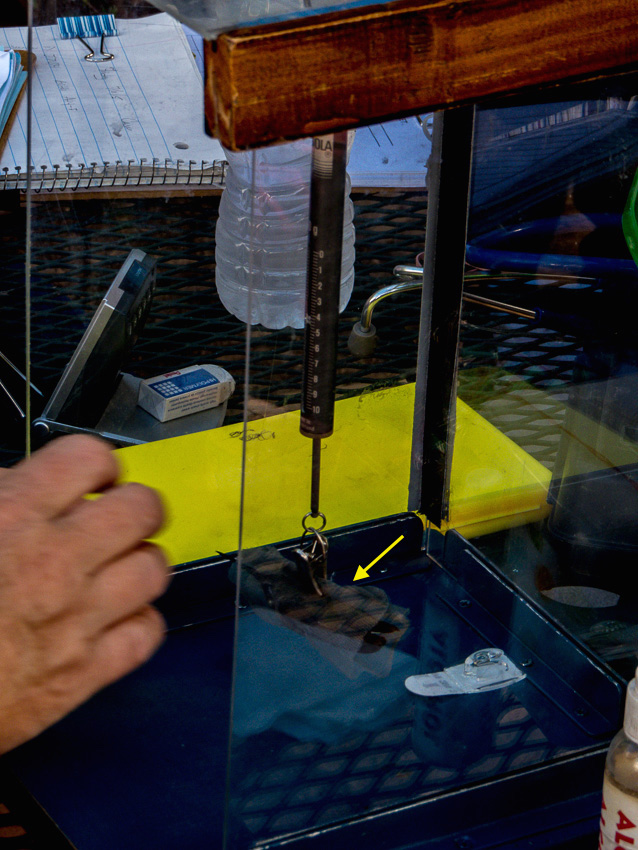
Before release, each bird is offered a drink for their journey back home.
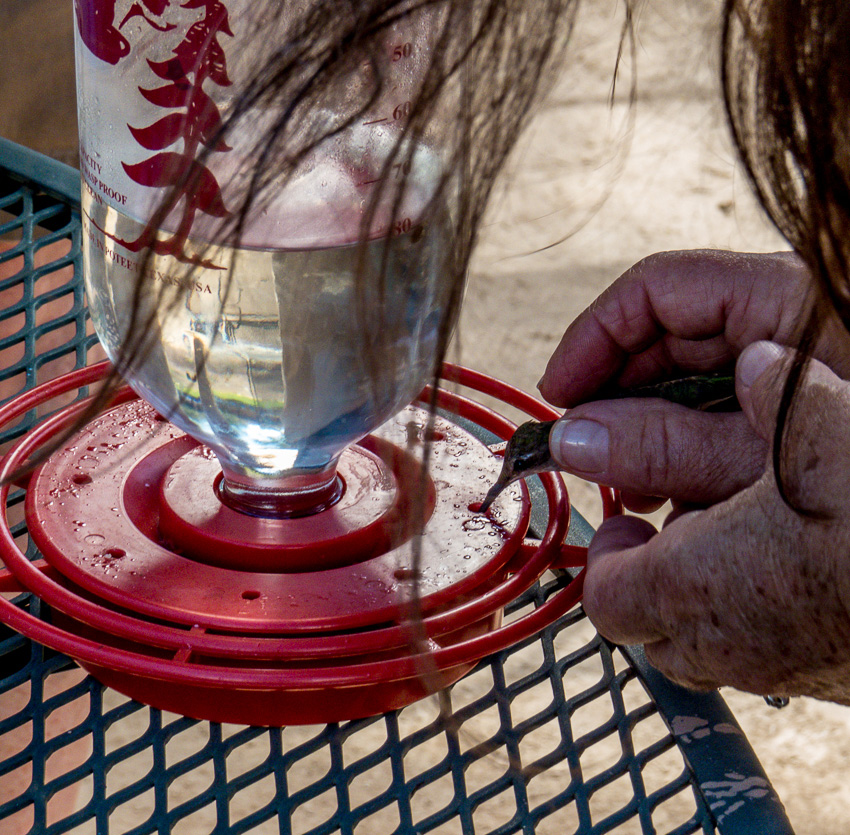
The second bird trapped was a male Black-chinned hummer. While it may be difficult to tell them apart, especially when upside down, the white tipped tail feathers are a reliable indicator.
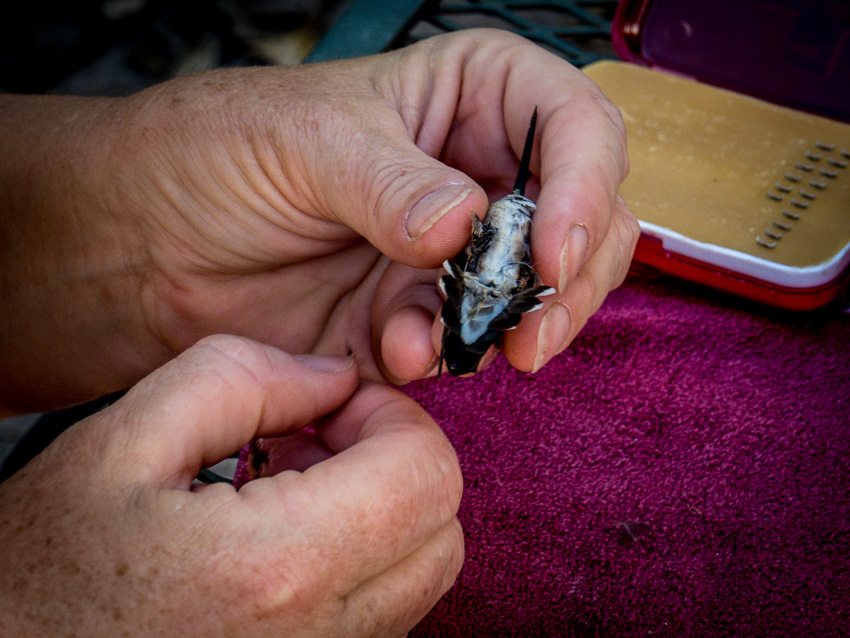
From above the bird, the feathers create a very obvious pattern and enhances the male plumage.
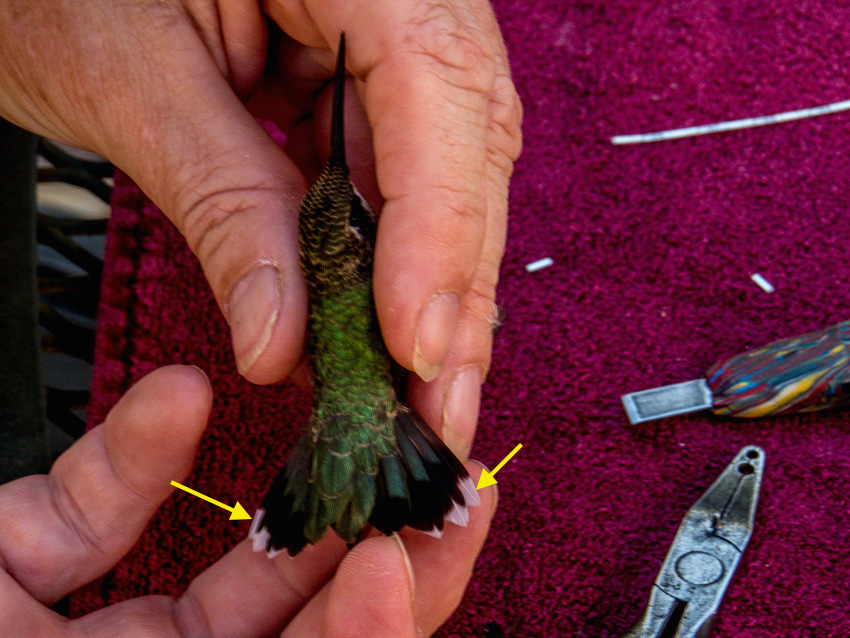
Sheri Williamson shows admiring onlookers the beautiful feather patterns of this male Black-chinned hummingbird.
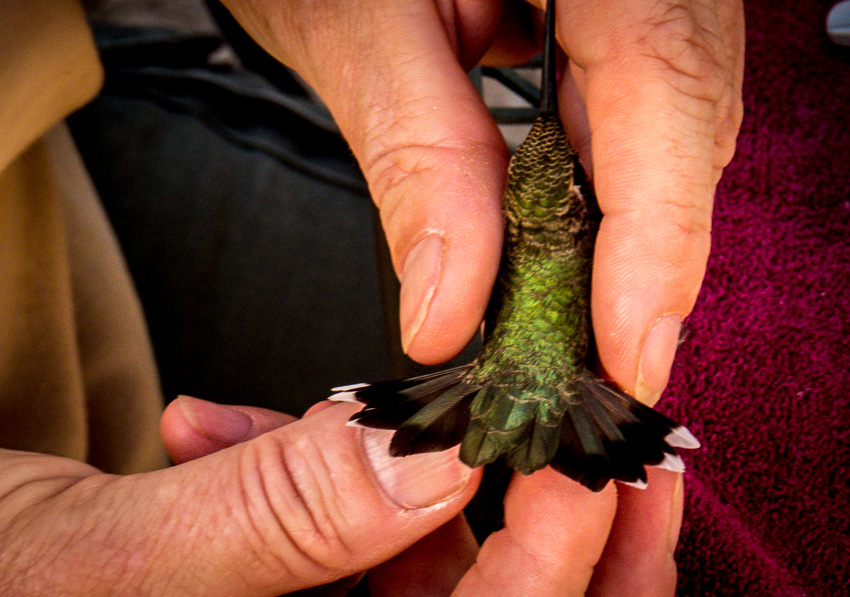
Sheri checks the band on this bird to assure that it is loose enough to be comfortable.
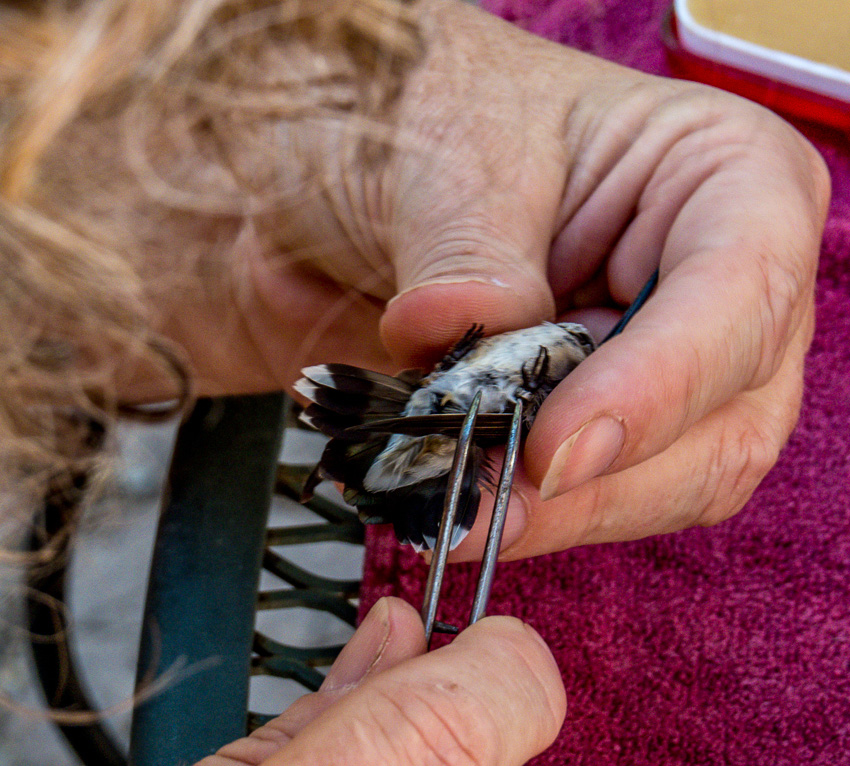
The small band is encircled in this photo.
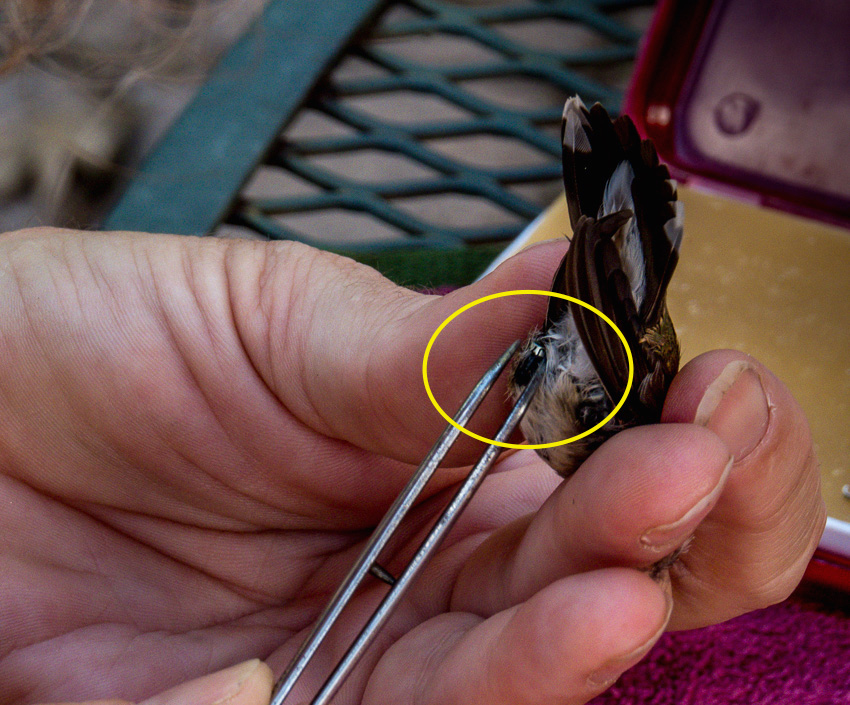
Banding attendees are offered an opportunity to release a bird. The bird is very carefully placed in a hand and…

then released (yellow arrow points to the bird)
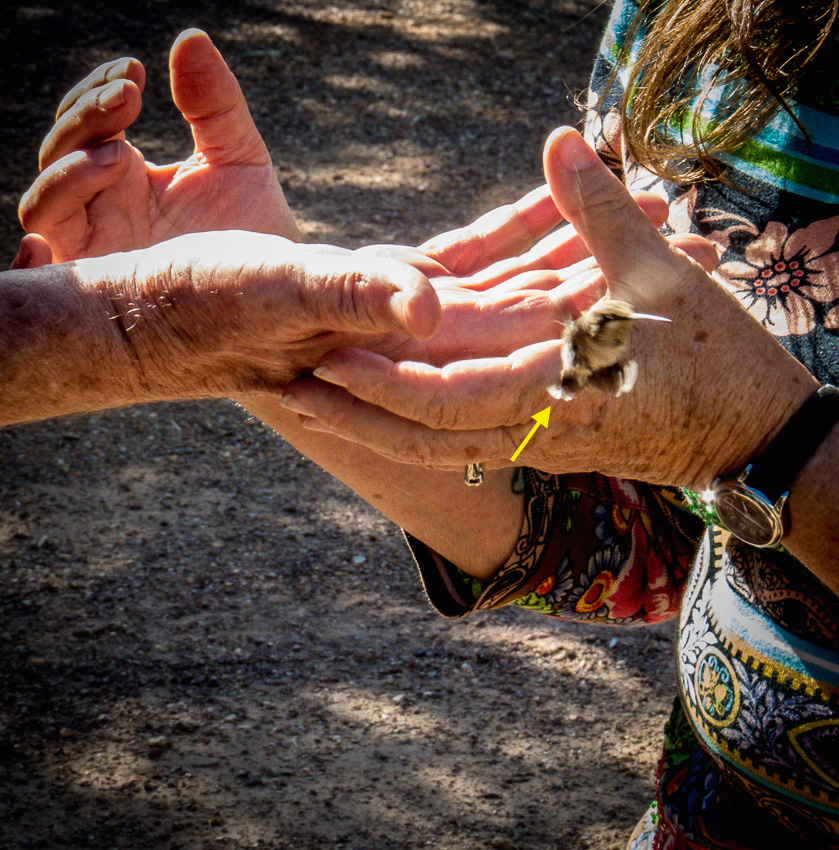
Read More:
Southeastern Arizona Bird Observatory
Southeastern Arizona Bird Observatory Hummingbird banding page
From the YouTube Video Notes (emphasis added):
“Published on Jun 19, 2015 – Did you know the coast of Texas is the most important spot for migratory birds in the U.S. and Canada? Smithsonian Migratory Bird Center staff journey to this small island annually to study songbirds returning from their tropical wintering grounds and share this experience with local schoolchildren. Understanding these species and teaching the next generation about them is critical to their survival. Learn more in this video made possible with the support of ConocoPhillips. #WeSaveSpecies #StateoftheBirds”
Sierra Vista, AZ is known for the birds that visit that area year-round. There are migratory birds that leave south and central America as well as Mexico and spend part of the summer in the southeast portion of Arizona. While visiting that region recently, we took note of a house sparrow nest in a tree and a male and female that were taking care of their young.
In the picture (below), the “dad” is bringing food to the babies. If you look closely you can see a grasshopper (or similar insect) just to the left of the tip of the yellow arrow (center of photo).
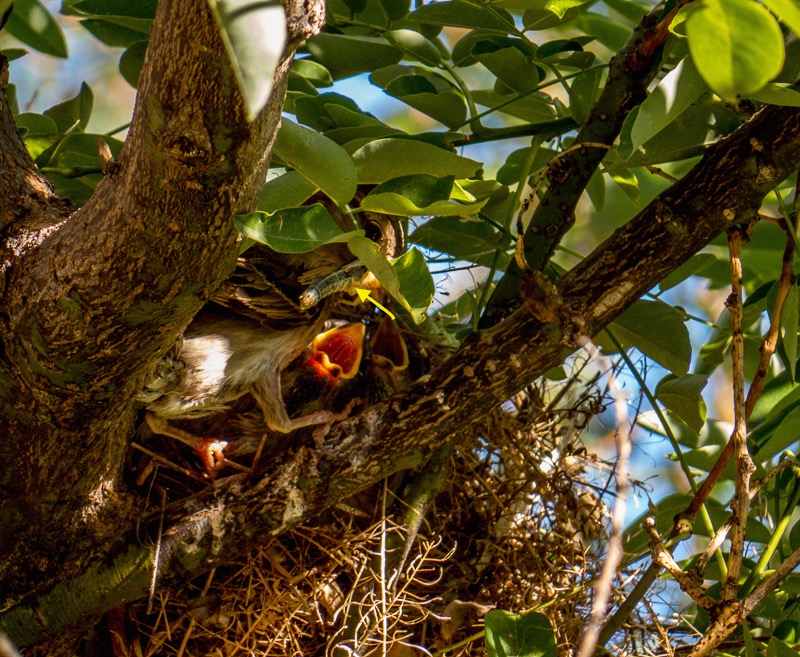
The adult bird is getting ready to “cram” the insect down the throat of the chick. They do this with great energy.
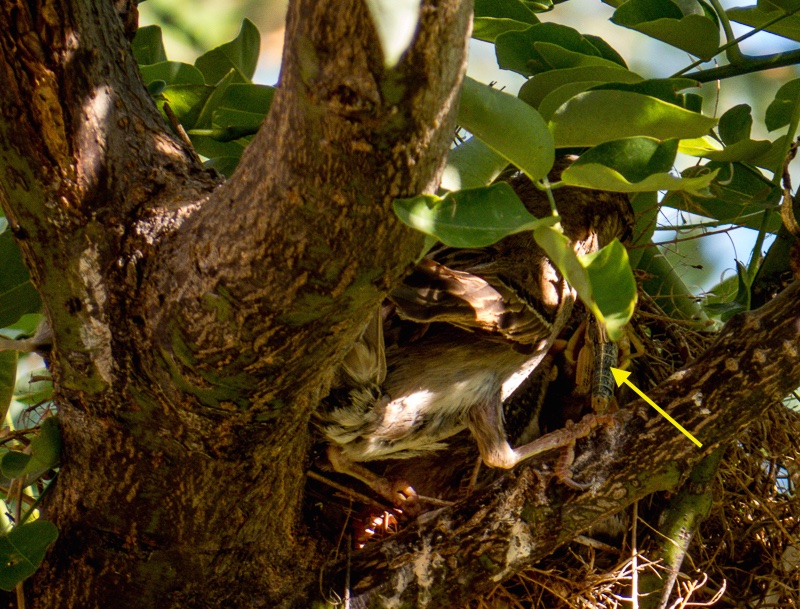
In this case, as in some bird species, both adults take turns feeding the chicks. This is a picture of “mom” watching the meal being delivered and perhaps providing instructions.
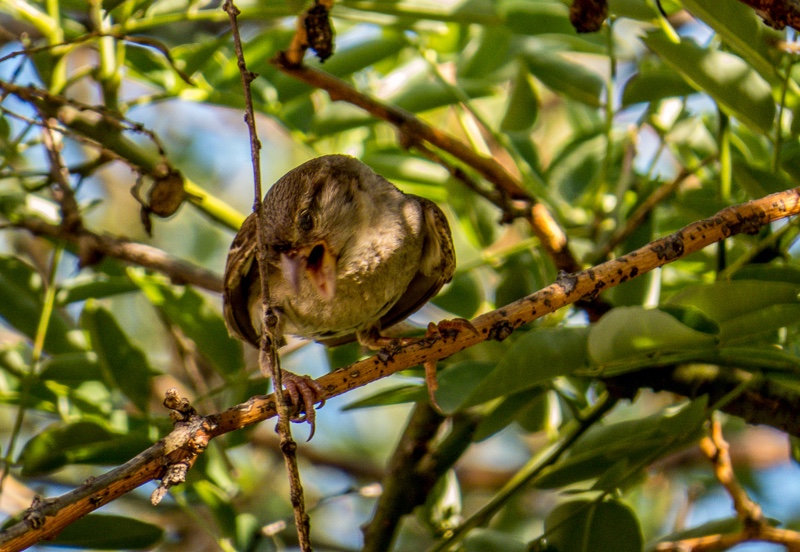
The male bird has left for a “refill” and both chicks look on in anticipation. The one on the left almost appears to be frowning as it awaits its turn.

Here is another photo of the chicks looking on with apparent increased vigilance and vocalizations.

This scene repeated itself over time and we enjoyed watching the protocol of the house sparrow for taking care of its fledglings. It is estimated that these chicks were just a few days away from leaving the nest as they are rather large; as chicks go.
Read More:
House Sparrow (The Cornell Lab of Ornithology)
“[An] Eagle cam captures stunning footage of an imperial eagle descending over 2,700 ft (830 m) from the world’s tallest building, the Burj Khalifa, in Dubai.”
Goal: Take an Imperial Eagle (with a camera attached) to the tallest building in the world and from that height, have it locate its handler and land on the arm of that trainer. The bird looks around for quite some time until it sees the trainer and then it folds its wings (@ 1:40 +/-) and dives. What details could a human see from that height? (Admittedly, the trainer appears to be in the middle of a large red square, but still…)
Apparently this event was held to draw attention to the fact that these eagles are endangered.
To learn more about how the eyesight of humans and eagles compare, read What If Humans Had Eagle Vision?
The translation from the YouTube Video:
“My goldfinch Tweety with a refreshing swim in my hands , I hope you enjoy it as much as I do.”
I found this bird bath relaxing, interesting and somewhat entertaining. I hope you enjoy it too!